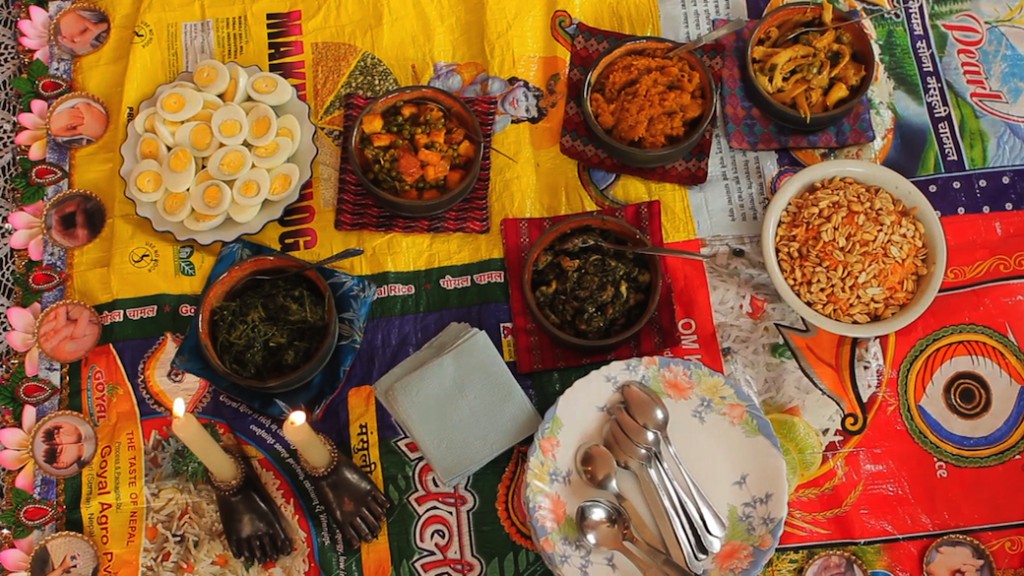Becoming a citizen is a condition that concerns so much of my daily thought that it’s perhaps best expressed as a nagging question. Becoming a citizen—what does that even mean? Having spent the past decade as a curator for Art21, reflecting on others’ experiences of becoming an artist, as well as preoccupied with becoming an artist and filmmaker myself, I wonder if this haunting “citizen” question is born out of the luxury of finally feeling at home in the murky wakefulness of the creative process. And what a luxury it is, made even more apparent when you begin to consider that for the vast majority of people on this planet the predominant question they face is not one of becoming but of survival.
Over the past two years, I’ve had an opportunity to immerse myself in the thorny relationship between aesthetics, citizenship, and survival by producing a documentary series on the recently completed smARTpower program. An initiative of the U.S. Department of State’s Bureau of Educational and Cultural Affairs, and administered by the Bronx Museum of the Arts, the project sent eighteen artists living in the United States to fifteen different countries—China, Ecuador, Egypt, Ghana, India, Kosovo, Morroco, Nepal, Nigeria, Pakistan, the Philippines, Kenya, Sri Lanka, Turkey, and Venezuela—to create community-based art projects with local artists and young people. The participating artists, many of whom had prior experience with community-based art and forms of social practice, had less than two months to develop an artwork on the ground while also engaging in person-to-person diplomacy. smARTpower asks provocative questions about what a good work of art is, what art is good for, and for whom.
A young girl, Margaret, poses for a photo as part of artist Miguel Luciano’s Peace Kite project in the Mukuru slum east of Nairobi, Kenya, 2012.
During her Senate confirmation hearing in 2009, US Secretary of State, Hillary Rodham Clinton stated her vision for American diplomacy:
“I believe that American leadership has been wanting, but is still wanted. We must use what has been called “smart power”: the full range of tools at our disposal—diplomatic, economic, military, political, legal, and cultural [my italics]—picking the right tool, or combination of tools, for each situation.”
For the participating artists in smARTpower, that culture is viewed as a “tool” by their government is a complicated issue that resists black and white summation. The same could be said for the local communities around the world, whose impressions of the US were often understood as the interlaced fingers of American imperialism and the American Dream.
As a curator and documentary filmmaker, I felt it was my job to ask difficult questions about the relationship between art and citizenship, to fairly represent a diversity of divergent opinions, and to capture moments of personal transformation and transcendence from the oppressive status quo—all without sensationalizing experiences or exoticizing peoples and places and cultures of which I can only hope to have a cursory impression. Throughout the process of filming, I believe we witnessed moments of individuals asking both what it means to be an artist and what it means to be a citizen, or as an artist in Nepal simply put, what it means to be “a good human being.”
Below is a selection of five films. Visit the smARTpower project website or Vimeo channel to view all fifteen.
Resting Stops: An Alternative Pilgrimage | Pepón Osorio in Nepal
In the Kathmandu Valley of Nepal, Art21 artist Pepón Osorio (b. 1955, Santurce, Puerto Rico; lives and works in Philadelphia) worked with a group of local artists and students to create tiffin boxes—vessels traditionally used by workers in colonial India to carry their meals outside of the home. The project broke through typically rigid divisions of class and caste, using the family meal as a poetic device that bridges cultural differences within Nepal.
Peace Kites | Miguel Luciano in Kenya
In the Nairobi slum of Mukuru, artist Miguel Luciano (b. 1972, Puerto Rico; lives and works in Brooklyn) worked with Kenyan youth to make handmade kites that feature their own life-size photographic self-portraits. When the kites are flown en masse, the project conveys concepts of individuality and community, as dozens lift their images into the sky simultaneously as a metaphor for freedom.
Banaglore for Beginners | Kianga Ford in India
In a shelter for women in Bangalore, India, artist Kianga Ford (b. 1973, Washington, D.C., USA; lives and works in Brooklyn) engages a group of young women as collaborators on an original story. Through a series of oral histories and fiction writing workshops, participants collectively developed a multi-part narrative about a young woman named Padma who faces difficult choices between familial obligations, romantic love, and independence.
The Rematch | Duke Riley in China
In the water village of Zhujiajiao, on the outskirts of Shanghai, artist Duke Riley (b. 1972, Boston, USA; lives and works in Brooklyn) creates a performance that re-imagines the legendary swimming race that determined the order in which the twelve animals appear in the Chinese zodiac. Riley engages local community groups, boat rowers, traditional Chinese opera singers, embroiderers, and school children in a rematch of the race on the Huangpu River.
Wearable Portable Architecture | Mary Mattingly in the Phillippines
With over 7,100 islands, the continuously growing archipelago that makes up the Philippines embodies movement and change. Art21 artist Mary Mattingly (b. 1978, Rockville, Connecticut, USA; lives and works in Brooklyn) designed mobile public spaces and garments that can be assembled and disassembled with ease. When a group of individuals meet up with these units, they may join them together to make a community structure, assembling spaces that not only protect but also collect water, store food, and produce power.
